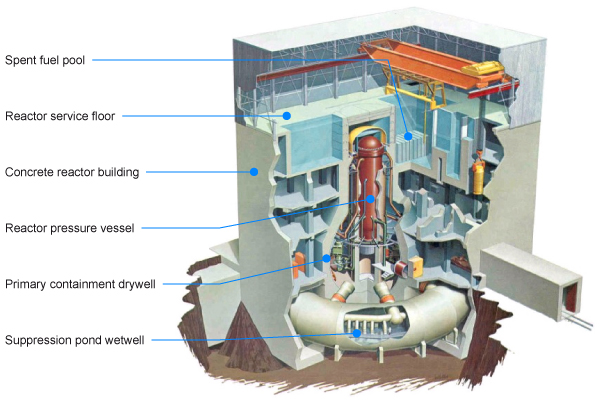- Following a major earthquake, a 15-metre tsunami disabled the power supply and cooling of three Fukushima Daiichi reactors, causing a nuclear accident on 11 March 2011. All three cores largely melted in the first three days.
- The accident was rated 7 on the INES scale, due to high radioactive releases over days 4 to 6, eventually a total of some 940 PBq (I-131 eq).
- Four reactors were written off due to damage in the accident – 2719 MWe net.
- After two weeks, the three reactors (units 1-3) were stable with water addition and by July they were being cooled with recycled water from the new treatment plant. Official ‘cold shutdown condition’ was announced in mid-December.
- Apart from cooling, the basic ongoing task was to prevent release of radioactive materials, particularly in contaminated water leaked from the three units. This task became newsworthy in August 2013.
- There have been no deaths or cases of radiation sickness from the nuclear accident, but over 100,000 people had to be evacuated from their homes to ensure this. Government nervousness delays their return.
- Official figures show that there have been well over 1000 deaths from maintaining the evacuation, in contrast to little risk from radiation if early return had been allowed.
Read more: http://www.world-nuclear.org/info/Safety-and-Security/Safety-of-Plants/Fukushima-Accident/
